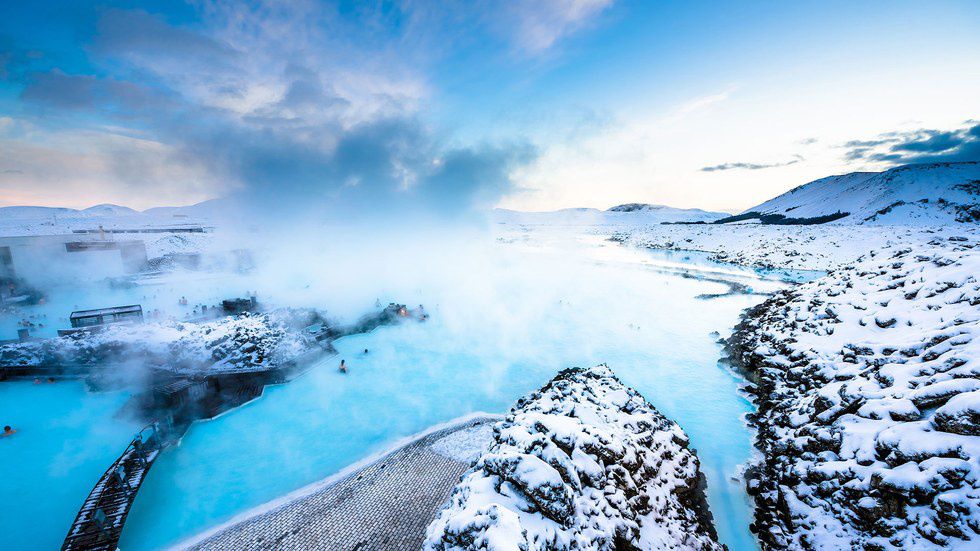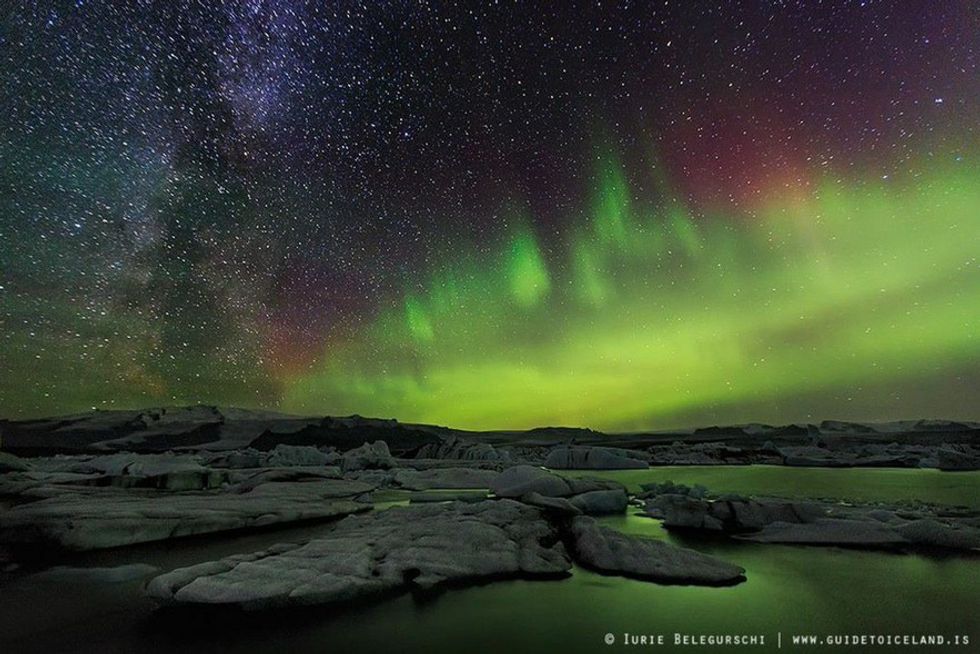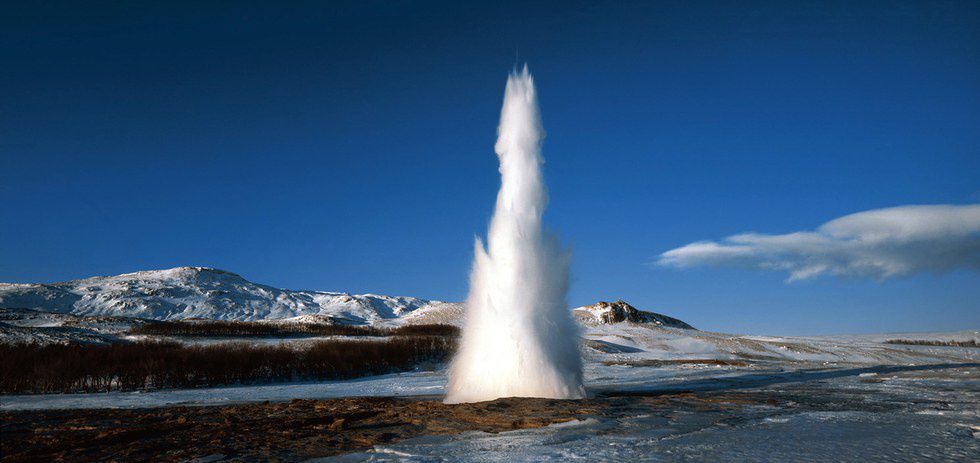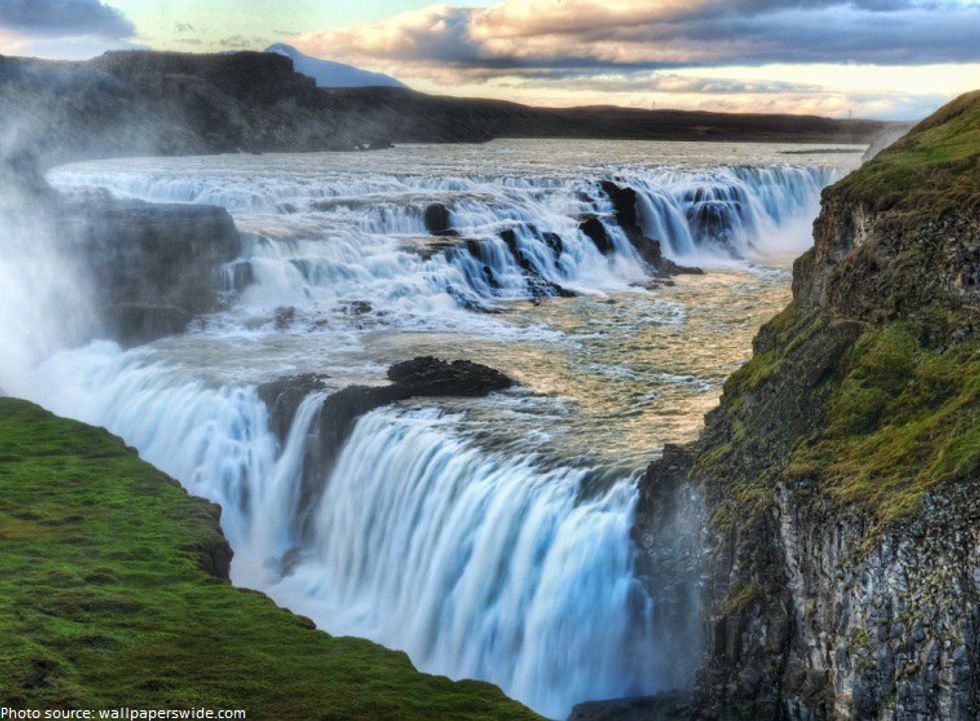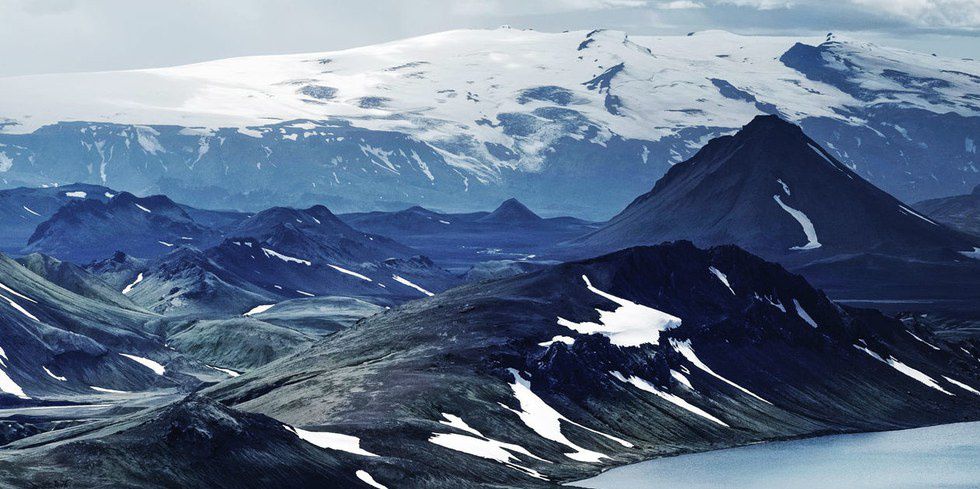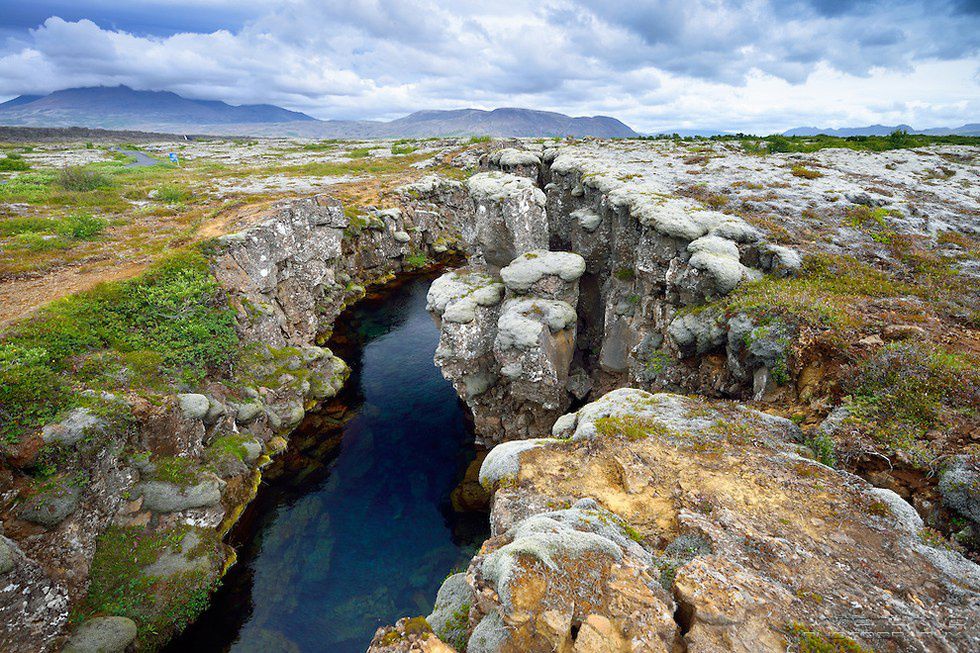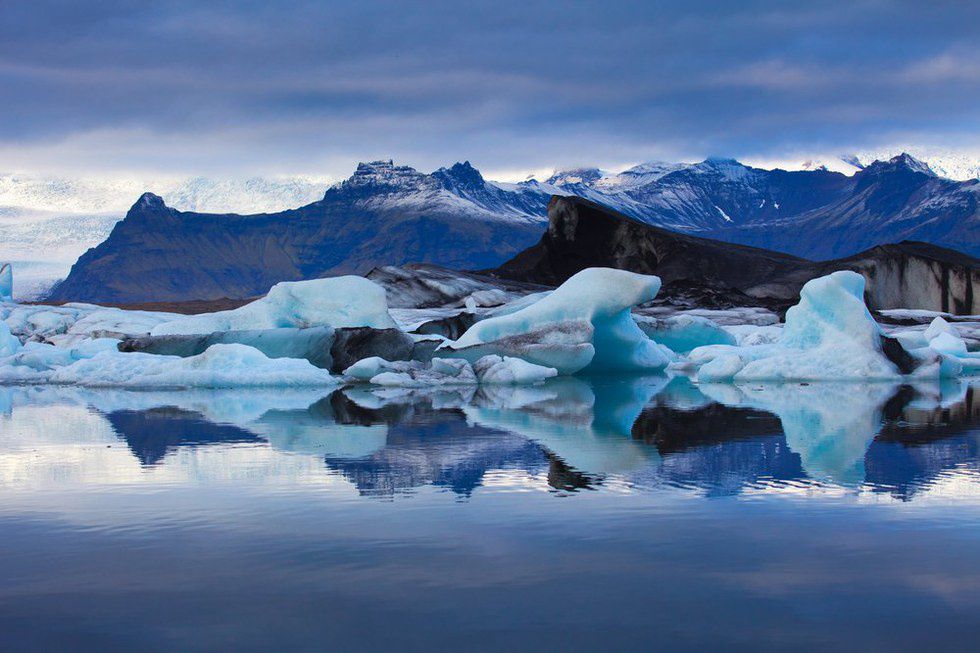1. Hot springs
Regarded as one of the '25 Wonders of the World,' the Blue Lagoon is a hot spring that has functioned as a geothermal spa since the 1980s. It is located near the capital Reykjavík, on the Reykjanes peninsula. Its silica-rich mud is known for its skin care benefits.
The majority of Iceland is comprised of rural towns and wilderness. The lack of light pollution in the country leaves full access to the night sky for unfettered observation of auroras visible on clear nights from September to April.
3. Geysers
The Great Geysir, the first geyser known of by early Europeans, is located in Haukadalsvegur in the southwest region of the country. It erupts every few minutes and shoots boiling water up to seventy meters into the air.
4. Waterfalls
Gullfoss and Seljalandsfoss are two of the most world-renown waterfalls in Iceland. Both sites are located in the south of Iceland and more than sixty meters high-- taller than the Niagara Falls!
5. Volcanoes
6. Hiking
Icelandic national park and World Heritage site, Thingvellir sprawls over thirty-five square miles of serene southwestern wilderness. The park overlaps a part of the tectonic plate boundaries of the Mid-Atlantic Ridge and is home to thousands of unique species, including endangered mink.
7. Glaciers
The land of ice and fire is home to glaciers that cover over a tenth of the country's surface. One glacier, Vatnajökull, is located on the southeastern coast of the island. It is the second largest glacier in the world in area, but the largest in volume. There are approximately forty hiking trails of varying difficulties all around different areas of the glacier.




